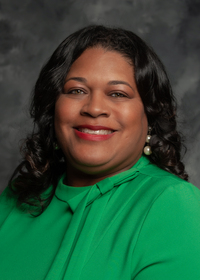Making Homemade Books
Making homemade books is an inexpensive way for your child to have access to books and for you to share different categories of books with your child. This publication provides instructions and tips to make your own age-appropriate books at home. There are several different methods of making homemade books, and you can find many ideas online.
Materials Needed
Resealable plastic bags
Laminating paper/contact paper
Book rings, yarn, string, twist ties, or something similar
Crayons/markers
Scissors (for adult use; be sure
to use blunt scissors for 4-year-olds)
Construction paper
Cardstock
Glue sticks
Magazines and/
or pictures
Hole puncher


Instructions
- Help your children select pictures from magazines, your family photo albums, or the internet. Or they may want to draw pictures or use a mixture of all of these options.
- Paste the pictures onto construction paper or cardstock. Your children can write their own stories or let you write the story they tell. For children younger than 2, we recommend selecting pictures of simple items they are familiar with. You can write what is in the picture if you want.
- Cover each page with contact paper or put each page in a resealable plastic bag. (If you don’t have contact paper or plastic bags, this step is optional.)
- Punch or cut holes on the left side of each page, making sure the holes line up.
- Bind the book. You can use book rings, yarn, string, twist ties, or anything else you have handy.
Finding Pictures Online
- Open a search engine and type into the search bar exactly what type of pictures you would like to use. (For example, pictures of babies eating.)
- Choose a picture with a clear image and no logos or copyrights over the image.
- Once you have chosen the perfect picture, click on it to see the full size. If the picture is still clear (not fuzzy or distorted), then right click on it and select Copy. Or you can right click on the picture and save it or email it to yourself to print later.
Inserting Pictures into a Word document
- Open a new Word document. (Go to File, select New, then select Blank Document.)
- Click on the Page Layout tab and change the margins to .05. Or you can choose the Custom Margins button.
If you choose to customize the margins, change all margins (right, left, top, and bottom) to the same number. - Under the Home button, choose to center the page.
- Insert your picture into the Word document. (On the Insert tab, choose Pictures, then Picture from File.)
- Click on the picture and drag the corners to make the picture larger. The smaller the margins, the more the picture can be stretched. Also, click on the Page Layout tab to change the picture’s orientation (portrait or landscape), which can help with stretching the picture larger.
- Print your document and cut out the pictures.
Tips for Making Homemade Books
- Use pictures that are large, realistic, and non-violent.
- Books do not always have to include words or sentences.
- Group the same types of pictures together based on a theme or topic.
- When using animal pictures, make sure they are realistic and not frightening.
- Remember to use pictures of people from different races, cultures, gender roles/occupations (male teachers, female construction workers), different ages (elderly, adult, older children, and young children), and people with differing abilities (using wheelchairs, etc.).
- Nature/science pictures are great for books. Look for pictures of waterfalls, the beach, flowers, trees, and insects.
- Look for old calendars with large pictures that can be used to create books.
- Double-laminate or use two layers of contact paper to make the pages thicker and sturdier, so they won’t tear as easily.
- Don’t use staples unless they are completely secure and covered with a durable material.
- When using homemade materials or books, be sure to supervise your children closely, as with all new learning materials.
- If you use resealable plastic bags to create your books, choose bags without a plastic zipper because these are a choking hazard.
- Choose the subject of the books based on the interests, abilities, and ages of your children.
- Choose materials that are safe and age-appropriate for younger children.
Important Note
Please remember that young children are sometimes rough when they explore things and can tear or break items. If this happens after you have spent your time making homemade books, toys, or materials, it can be very upsetting and discouraging. However, it is important to remember that children do not think as adults; they do not do these things to make you angry or upset.
Children are simply exploring and learning how to use materials and, in doing so, they test the limits of the materials. Take a deep breath and think of how to make them more durable next time and some steps to help children use them appropriately. Model sitting and using the materials in the correct way.
Also remember that your children love you and they need a patient, kind parent/guardian who understands that this is just a stage and “this, too, shall pass.”
Happy reading!
M2345
By Louise Davis, PhD, Extension Professor, and Elizabeth Thorne, MS, Graduate Assistant, Human Sciences.
The Mississippi State University Extension Service is working to ensure all web content is accessible to all users. If you need assistance accessing any of our content, please email the webteam or call 662-325-2262.


